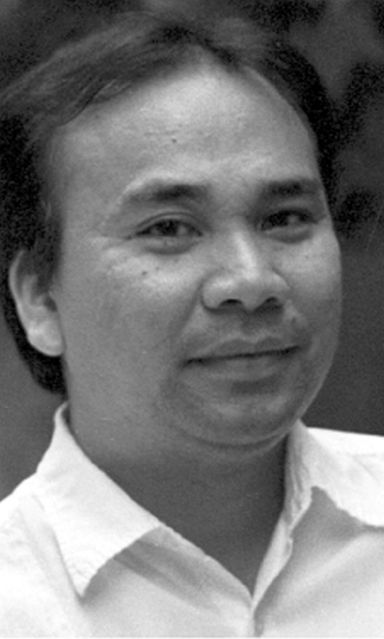
BERSALES
(This piece was supposed to appear during the week of the fourth anniversary of the 2013 earthquake but had to come out only now because of the sudden demise of our dearly beloved Ricardo Cardinal Vidal.)
Among the records kept at the Augustinian archive at Valladolid, Spain, is a book that not only shows three maps dated to 1733 detailing the properties of the Augustinians assigned to the Convent of the Santo Niño de Cebu but also a 37-page manuscript on church construction by Fray Juan de Albarran, OSA.
This is the parish priest who started the construction of the Santo Niño Church that we see today, in 1735. Entitled, “Advertencias para que se puedan ofrecer en este convento” or “Advice for the possible works that may become necessary in this convent,” this 37-page manual provides details on the way the church was constructed, complete with the geometry that went into the making of arches and other similar forms.
In Albarran’s “Advertencias,” we find where the stones that made up the church were located: in Mactan, not in Panay, as was originally reported elsewhere. It was the finding of this source nearby that must have certainly speeded up the completion of the church in just five years.
One must not forget that an earlier version, made of a combination of brick and stone, was discontinued for it was deemed unsafe especially during earthquakes.
He explains that the reason for initially preferring brick was because of the difficulty of finding stone sources, which he found at first in faraway Carcar but had to give it up.
Apparently, the construction of the Jesuit Colegio de San Ildefonso early in the 1700s had wiped out all other existing sources of stone nearby.
Another important factor in speeding up the church’s construction was the finding of sources of hardwoods in the mountains of Aringai and in Pitalo (presumably the one in San Fernando) that could be made into dugout canoes or ‘banca’ in transporting the stone from Opon.
He even suggests their length: 9 to 12 brazas (one braza = 1.68m) and without “cate” (“katig” or outrigger). He also mentions ‘bancas’ that he found in Carcar and Argao. All these after first going all the way to Capiz and Panay looking for a mode of transporting the stone.
It appears that the stones were cut on site in Mactan as Albarran confesses difficulty when it came to finding sources for decorative pieces and writes, “As for the transportation of the large pieces of stone necessary for arcs, cornices and portals we cannot give any fixed rule.
These are more difficult to be found, cut and loaded onto the bancas, and therefore the native must be asked to produce an amount of work in relation to the size, length and thickness of the stone. But it is better and more convenient to ask them for a few more than they can, so they will bring just as much as they really can comfortably do.”
Then he issues a caveat about the naughtiness of the natives hauling the stone, much like the problem experienced today with workers paid by the day in lieu of “pakyaw” (payment over a fixed number of days to complete).
He writes: “It is necessary to take great care when receiving the worked stone, because if not the Indios count by fingers the work of a day as if it were the work of three days. Also very often at night they take the stones which are already received as finished work, and bring them back again to the working place, taking them back the next morning as newly done work.
So it is better to work the stone at the beach, and after finishing the whole work, receive it all at once, and load the stone in the carts as they are counted, and then keep them inside the yard, so the Indios cannot do so many tricks.”
Our native ancestors also had one more trick up their sleeve when it came to transporting the cut stones: “But when the boats come it is necessary to take great care, because they (natives) often bring forty stones and then say they brought sixty. That is why, from now on three persons should be asked to bring one hundred stone claddings (‘tablilla’) a week.”
As for lime, used as binder, Albarran writes that as was practiced only limestone or “manonggol” was used to produce lime and that any other stone mixed with it would not result in good lime.
But he discovered that any white stone as good as “manonggol” in making lime, even including any unburnt leftovers in the oven or kiln.
And in burning the lime, he adds: “The best day to start the fire in the lime kilns is on Saturday afternoon. In this way on Monday morning it is ready to start introducing the stones inside.
If the fire is set on any other day a lot of lime will be lost, since one or two days will come in between the time the lime is produced, and since on Sundays no work is done, the lime cools down and it takes twice the effort to warm it again.”
The conservation architect Santiago Porras Alvarez wrote about Albarran’s many bits of advice on construction as part of his doctoral thesis submitted to Tokyo University in 1996 where he devotes one chapter on it, complete with both English and Japanese language translations.
He has so kindly shared it with me, which has spared me many hours that would have been spent translating the document.
His verdict, after comparing it with a manual on the construction of forts and fortifications by the military engineer Manuel Herbella in 1882: the basic contents are almost the same with the “amateurish” Albarran.
Between one formally trained as a military engineer and the other trained 150 years earlier to simply spread the gospel, the latter wasn’t so bad after all.